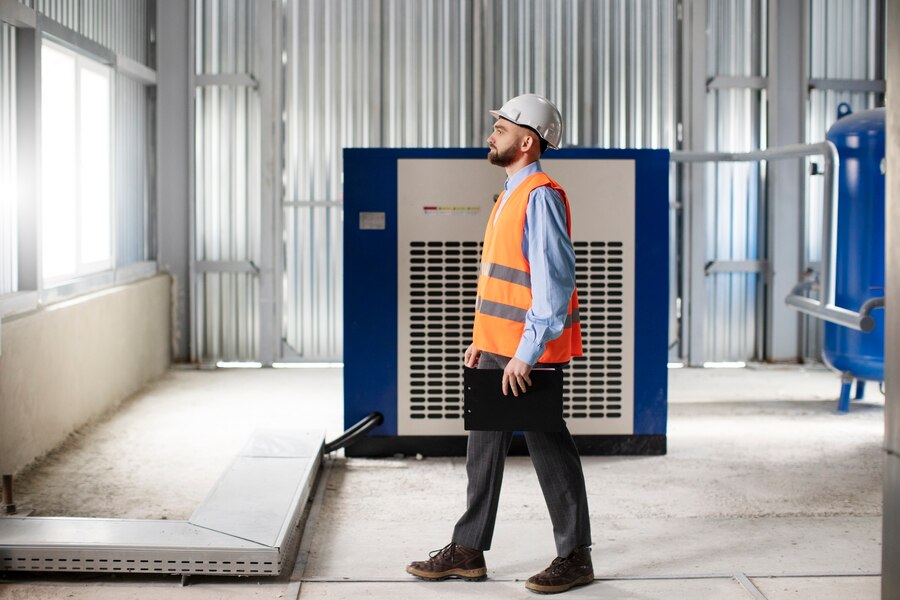As global temperatures soar, staying cool isn’t just a luxury—it’s a necessity. Heat waves are causing heat strokes, especially in humid, tropical regions. Split systems are becoming the go-to choice for homes to combat the heat. Their efficiency and flexibility make them a popular solution for new constructions and upgrades. Dive into our ultimate guide to split systems to discover how these cooling champions can keep you comfortable, informed, and in control of your home’s climate.
What is a Split System?
This cooling system consists of two main components: an indoor unit and an outdoor unit. These units of Split Systems work together to provide climate control in individual rooms or zones within a home. Unlike traditional HVAC systems, split systems do not require extensive ductwork, making them a versatile option for many households.
Common Types of Split Systems
- Single-Room Split Systems: They are designed to heat or cool a single room, these systems are ideal for smaller spaces or specific areas within a home.
- Multi-Split Systems: These systems link multiple indoor units to a single outdoor unit, enabling independent temperature control in different rooms or zones.
- Ducted Split Systems: These systems use a network of ducts to distribute air from a central indoor unit to various rooms, offering a whole-house solution.
Benefits of Split Systems
- Energy Efficiency: Split systems are popular due to their energy efficiency, often achieving higher SEER (Seasonal Energy Efficiency Ratio) ratings compared to other HVAC options.
- Flexibility and Zoning: The ability to control the temperature in individual rooms or zones increases comfort and can lead to energy savings.
- Aesthetic and Space-Saving: Split systems do not need bulky ductwork and can be installed to minimise visual impact and save space.
- Quiet Operation: Modern split systems are built to operate quietly, making them suitable for private areas like bedrooms, living rooms, and any other space where noise can be a concern.
Key Components of a Split System
- Indoor Unit: This unit is mounted inside the home and contains the evaporator coil and a fan to circulate air.
- Outdoor Unit: Located outside, this unit houses the compressor, condenser coil, and fan.
- Refrigerant: A chemical compound loaded in an indoor unit that absorbs and releases heat, facilitating the cooling and heating process.
- Compressor: Compresses the refrigerant, increasing its temperature and pressure.
- Expansion Valve: It removes pressure from the liquid refrigerant to enable its expansion or change of state from a liquid to a vapor in the evaporator.
Split System Installation Process
Pre-installation Considerations
Evaluate the space, determine the appropriate system size, and consider the placement of indoor and outdoor units.
Steps Involved in Installation
- Site Inspection: Assess the location for the indoor and outdoor units.
- Mounting the Indoor Unit: Secure the indoor unit on a wall bracket or ceiling mount.
- Installing the Outdoor Unit: Place the outdoor unit on a stable surface, ensuring proper airflow.
- Connecting the Units: Run refrigerant lines, electrical wiring, and drainage pipes between the units.
- System Testing: Check for leaks, ensure proper operation, and calibrate the system.
Importance of Professional Installation
Professional installation ensures the system is set up correctly, maximising efficiency and lifespan. Incorrect installation can compromise performance and void warranties.
Common Installation Challenges
Limited space, structural constraints, and compliance with local building codes can present challenges during installation.
Maintenance and Care For Split AC Systems
Regular Maintenance Tips:
- Clean or replace filters every 1–3 months.
- Inspect and clean the outdoor unit regularly.
- Check refrigerant levels and refill if necessary.
- Schedule annual professional maintenance checks.
Common Issues with Split Systems and Troubleshooting
- Poor Airflow: Check for clogged filters or obstructed vents.
- No Cooling or Heating: Inspect the thermostat settings and ensure the system is powered.
- Strange Noises: Listen for unusual sounds that could indicate mechanical issues or debris.
When to Call a Professional
Persistent issues, refrigerant leaks, or complex repairs should be handled by a qualified technician.
Cost Considerations with Split AC Systems
Initial Costs: The cost of purchasing and installing a split system varies based on the type and capacity of the system.
Operating Costs: Energy consumption, influenced by system efficiency and usage patterns, determines ongoing costs.
Maintenance Costs: Regular maintenance incurs minor costs, but prevents expensive repairs and prolongs the system’s life.
Choosing the Right Split System for Your Home
Factors to Consider:
- Size: Select a system with the appropriate capacity for your space.
- Efficiency: Look for high SEER ratings for better energy efficiency.
- Budget: Balance initial investment with long-term savings.
- Comparing Brands and Models: Research reputable brands and read customer reviews to find a reliable system.
- Reading and Understanding Energy Ratings: Familiarise yourself with energy labels and ratings to make an informed choice.
Environmental Impact of HVAC
Energy Efficiency and Carbon Footprint: Efficient split systems reduce energy consumption and greenhouse gas emissions.
Refrigerants and Their Impact: Choose systems that use environmentally-friendly refrigerants with lower global warming potential.
Sustainable Practices and Alternatives: Consider renewable energy sources or hybrid systems that combine multiple technologies for greater sustainability.
Frequently Asked Questions Regarding Split Systems
Q: How long do split systems last?
A.With proper maintenance, split systems can last 15–20 years.
Q: Can split systems be used for heating?
A. Yes, many split systems offer both heating and cooling functions.
Q: Are split systems noisy?
A: Unlike ducted air conditioning, modern split systems are designed to run quietly with minimal noise levels.
Split systems offer an efficient, flexible, and aesthetically pleasing solution for home climate control. By understanding their components, benefits, and maintenance needs, homeowners can make informed decisions and enjoy a comfortable living environment. Whether you’re looking to install a new system or maintain an existing one, this guide provides the essential knowledge to demystify split systems and help you make the best choice for your home.

